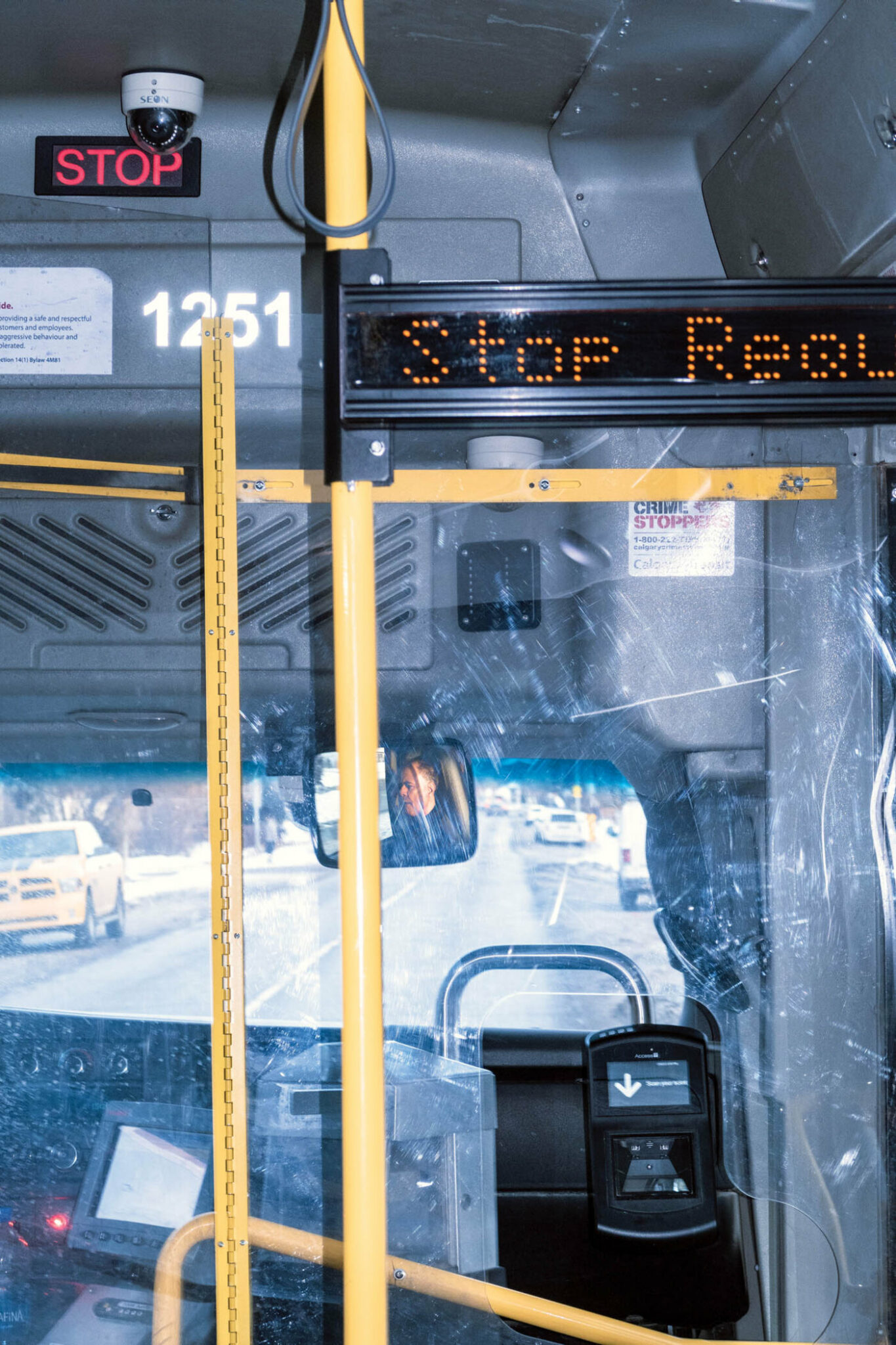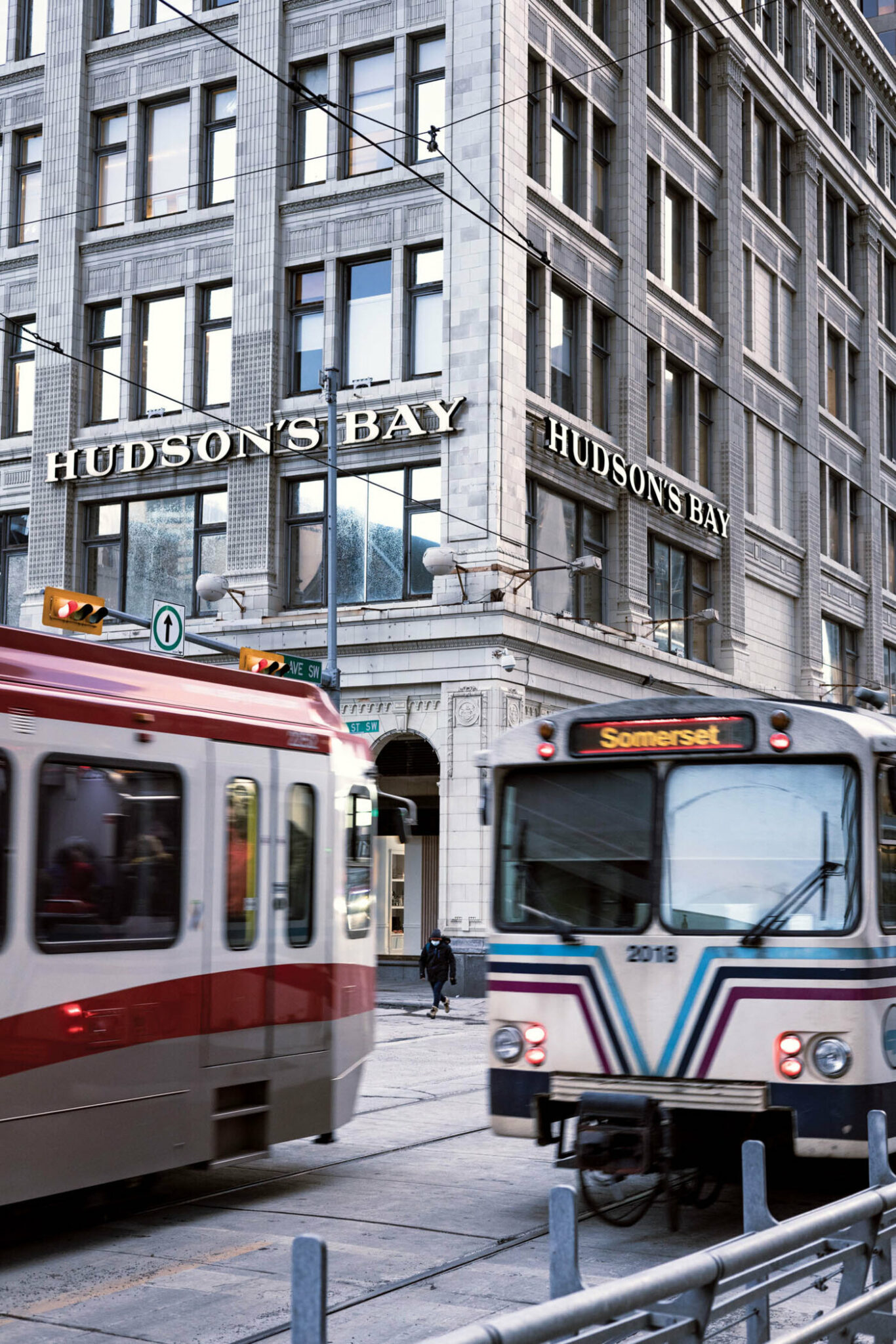
When I moved to Calgary from Vancouver in 2017, I knew the city wasn’t exactly known for stellar public transit. But, I was determined to make the best of what there was.
A die-hard cyclist, pedestrian and transit user who’d never owned a car, I’d hoped my inner-city location would set me up to enable car-free living. It took exactly one transit trip, wherein I spent the better part of an hour trying to get from Bankview to Inglewood for a Sunday afternoon of shopping, to realize the flaws in my plan. The kicker was a 25-minute wait for a bus transfer on a cold and deserted downtown street corner. I attempted transit a few more times but it never seemed to make sense: buses didn’t go where I needed to be, or, if they did, the time it took to get there was prohibitive. Eventually, I realized my short-distance trips were more efficiently handled by walking or biking. As for everything else… well, I now own a car.
To be fair, when it comes to transit, Calgary has done some things exceptionally well. Our LRT (light rail transit) system was one of the first in North America and experts say it routinely punches above its weight, particularly when it comes to weekday rush hours. Pre-COVID, more than 300,000 people took the CTrain daily, rivalling some European cities like Copenhagen, where public transit is part of the cultural fabric. Meanwhile, the Max and BRT lines have introduced rapid transit to parts of the city not served by LRT, and the future Green Line is poised to become the metaphorical backbone of Calgary’s transit system — a “spine” running through the centre of the city, bringing walkable train stops through the heart of communities ripe for densification.
But the fact is, many parts of our city remain un- or underserved by transit, while infrequent service and inefficient connections relegate it to a mode of last resort for many. This doesn’t just frustrate people who rely on the system — it drives potential users away. What’s more, the gaps in our transit system are holding us back from reaching our sustainability, economic and social goals as a city. If we hope to become a destination for highly skilled workers and large corporations who have their pick of any city in the world, we need transit that does more than move people into and out of downtown on either end of the workday. It needs to become an efficient and affordable choice for running errands, going for dinner and taking our families on outings. This is where the system has fallen chronically short. Add to that, the impact of the pandemic on ridership, service and safety concerns, and the City certainly has its work cut out for it in redirecting a transportation system — and a culture — built around cars. Fortunately, it’s full of people who think we can do it.
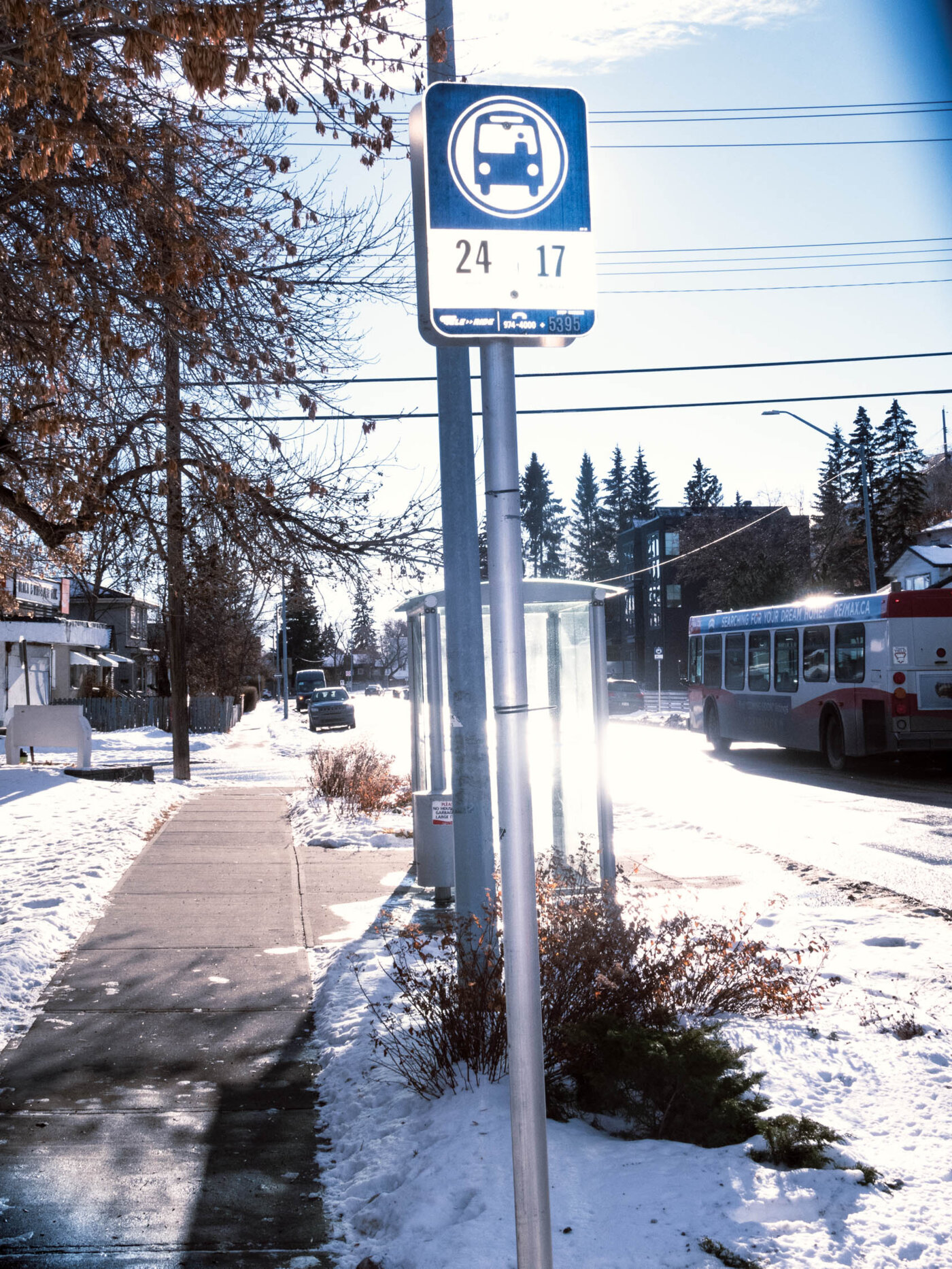
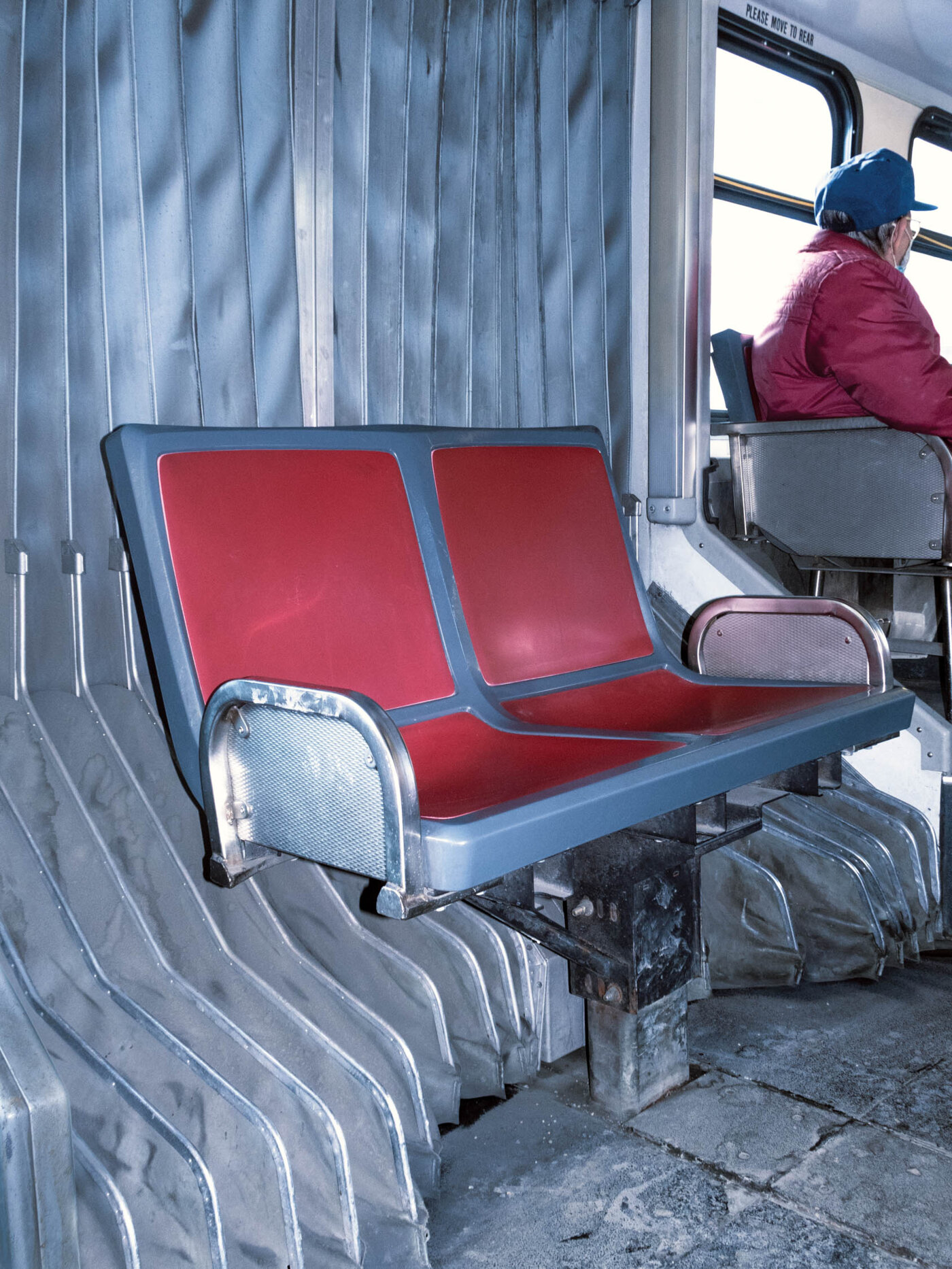
Building on What We Have
From his vantage point ferrying Calgarians to far-flung vacation spots, airline pilot Jeff Binks has a bird’s-eye view of the city, especially the cars and trucks crawling along Deerfoot and other arterials at rush hour. “It made me start to question: Is there a better way to approach city-building in Calgary? And, to me, that was investing in our transit infrastructure,” he says.
In 2014, Binks started the LRT on the Green Foundation to advocate for the Green Line and other transit improvements. After spending a lot of his downtime exploring some of the world’s greatest cities, often by transit, Binks says he’s realized Calgary isn’t as far away from having a more functional transit system as many people think. “We don’t have to reinvent the wheel; there’s a lot of places doing a lot of good things,” he says. “You just have to be open-minded enough to reach out to those cities and borrow their best practices.”
One approach Binks and other advocates say would do wonders in Calgary is implementing 10-minute transit — running buses and trains on major routes every 10 minutes or less for extended periods, not just at peak times. “That 10 minutes is a big psychological thing for people,” Binks says. “Beyond that, people start checking schedules and they’re not taking transit when they want, they’re taking transit when they have to.”
Research has found that when people know they won’t have to wait, say, 25 minutes in the cold for a bus or train, they’re more likely to take spontaneous trips and make transit a bigger part of their lives. This, in turn, leads to something called “diverse demand,” where you have more potential riders throughout the day paying fares, populating routes and generally reducing the cost of transit. In fact, experts say a major factor that separates cities like Vancouver, Toronto or Montreal from Calgary isn’t necessarily the multibillion-dollar rapid-transit infrastructure like subways (though those help), but the frequency of the buses that feed them. “People start to realize that, actually, the best way to get into town is a quick bus to a train,” says Willem Klumpenhouwer, a transit researcher who grew up in Calgary and now lives in Toronto.
In fact, the 10-minute transit idea isn’t new to Calgary; it was outlined in the 2013 document RouteAhead: A Strategic Plan for Transit in Calgary, a 30-year vision for Calgary transit. A major part of the plan calls for the creation of a Primary Transit Network (PTN) that would see buses and trains along major routes run at 10-minute intervals, or less, 15 hours a day, seven days a week. But, other than a brief period of running CTrain lines and the No. 3 bus route on 10-minute intervals that was quashed in 2019, the plan hasn’t moved ahead. According to a City spokesperson, budget constraints, the economic downturn and COVID all conspired to keep the PTN from expanding, though it is being reconsidered for the updated Route Ahead strategy to be released by the second quarter of 2023.
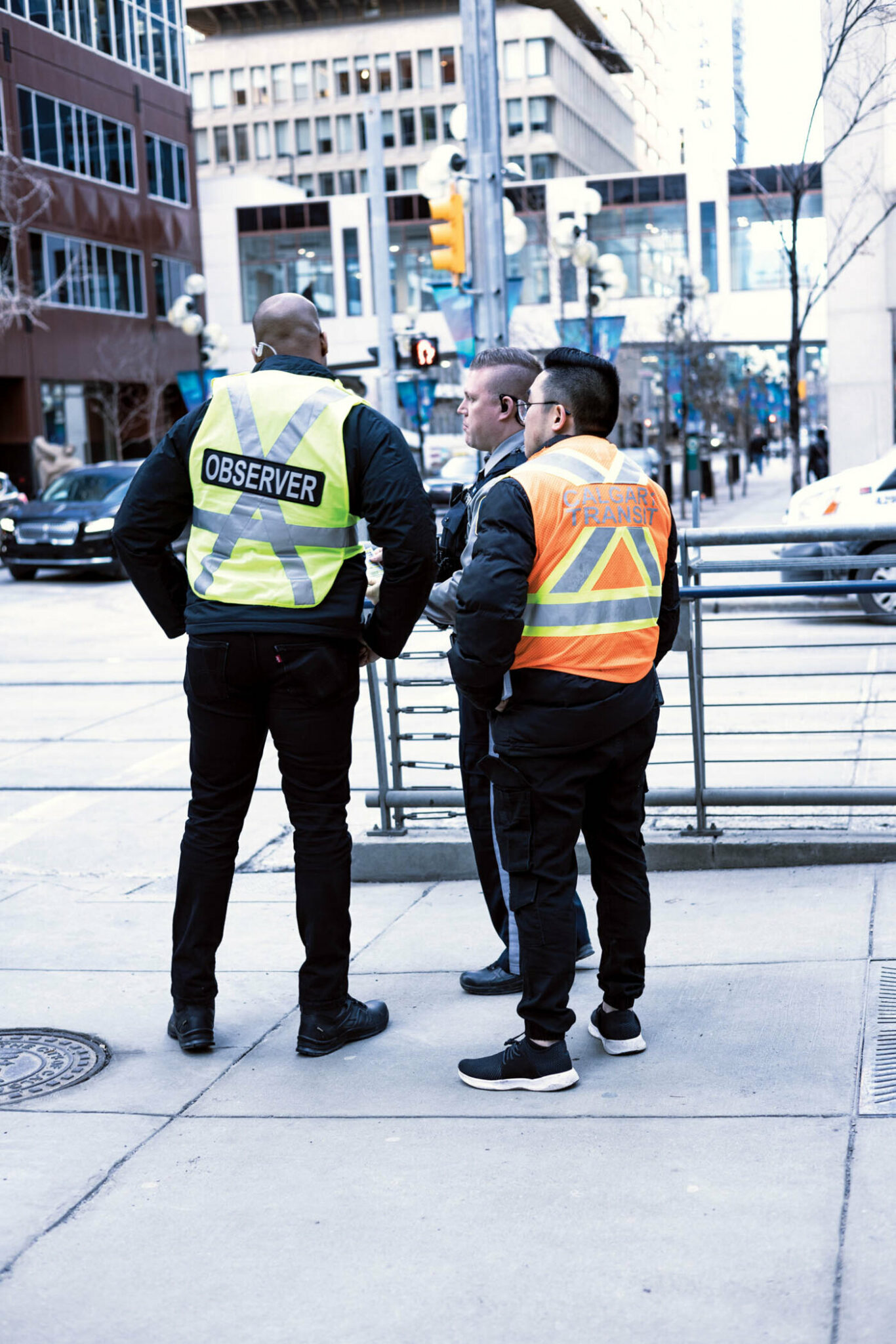
Recalculating Costs… and Benefits
Obviously, boosting transit service comes at a price, and the City’s $486 million transit operating budget (a 2021 figure that includes a net budget of $285.7 million from tax support) is already stretched. However, advocates say that transit-operating budgets are unfairly scrutinized, likely because they are purely funded by fares and property taxes, while roads and other vehicle infrastructure often get funding from senior governments. Yet, Binks and other advocates think people would likely feel differently if they had a better grasp of the costs associated with maintaining infrastructure primarily used by private vehicles — and the benefits of doing things differently.
A recent study from the Université Laval found the cost to individuals using transit is largely the same as driving, at 94 and 95 cents per kilometre, respectively. But, when you add up the cost to society, including road construction and maintenance, pollution, accidents, traffic enforcement and time lost in gridlock, travelling by private vehicle costs more than four times that of public transit, at $5.46 per km vs. $1.14 for transit. What’s more, data shows those costs grow as more drivers use our roads, while increases in transit ridership bring costs down. “We could be spending our money on better things that are more efficient at what we’re trying to accomplish,” says Justin Simaluk, president of Rail for Alberta, an advocacy group pushing for urban, regional and inter-city rail networks. Additionally, he says, investments in things like rail infrastructure come with economic advantages for cities that you don’t see when you invest in roads. So, while capital projects like the Calgary Ring Road and the Green Line both come with multibillion dollar price tags, one stands to bring a much bigger economic benefit to the city.
Kate Koplovich, director of strategy for Calgary Economic Development, says the Green Line is expected to create 20,000 direct and supporting jobs for Calgarians. But the bigger benefit is the $2.2 billion the city stands to see due to the property uplift and increased market value for properties close to the transit stations. “There’s a direct economic development impact of public transit that is so important for a world-class city really looking to stimulate its economy,” she says.
Then there’s the impact on the City’s efforts to attract diverse corporate investment in competitive industries like tech. Many Calgarians will remember the frenzy Amazon caused in 2017, when it announced its location search for a second North American headquarters. Calgary was one of more than 200 cities to throw its hat into the ring with a cheeky campaign featuring a lumberjack type offering to fight a bear for the e-commerce behemoth. We might have fared better if we’d offered to build a rail link to the airport instead.
While transit doesn’t explicitly top the list of factors large companies like Amazon say they look for when considering investing in a new community, it has an outsized impact on their top three considerations, says Faisal Karmali, senior wealth advisor & portfolio manager with CIBC Private Wealth Popowich Karmali Advisory Group. Things like the availability of talent, the ease of doing business and the attractiveness of the location for employees are all impacted by transportation considerations. “The more challenging the transit system is, the harder it is for companies to select that city to move into,” he says.
In the end, Amazon went with Northern Virginia, an area rife with regional rail connections to Washington, D.C., and an airport so close to the proposed HQ2 location the bid reportedly included a pedestrian walkway to the terminal.
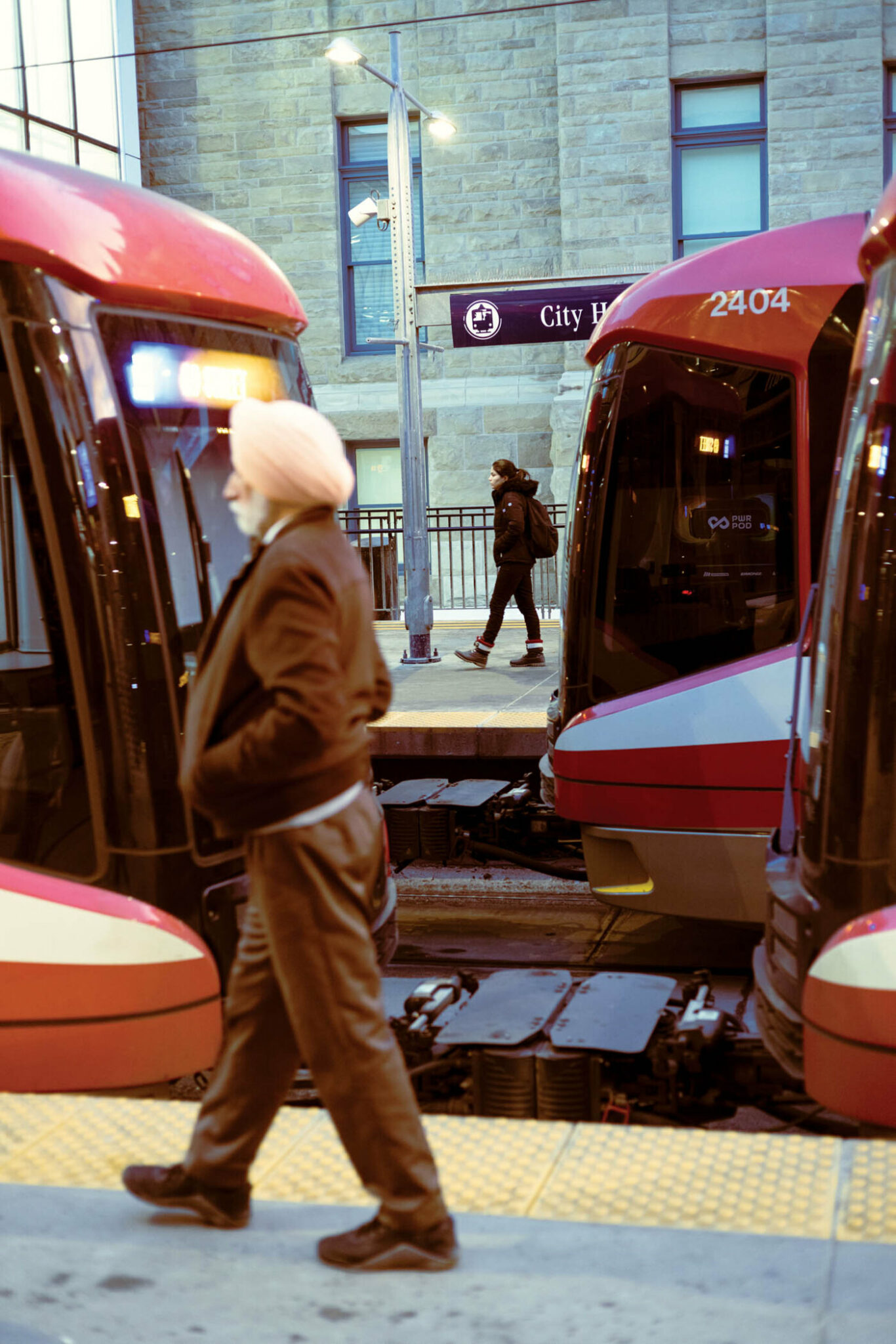
Driving a Culture Shift
It’s not just companies that are increasingly considering transit when looking for a long-term home. The pandemic saw millennials close the gap with older generations in terms of car ownership, but studies show they consistently drive less than their predecessors. Gen Z, the oldest of whom are now in their mid-20s, are even less likely to get behind the wheel, citing environmental, financial and lifestyle factors. This trend means that public transit is becoming a bigger consideration for young people when deciding where to live, and, for a city that already struggles to retain its young adults, sub-par service is a liability.
John Clegg says it seems like Calgary is behind the times when it comes to public transit. Growing up in the southwest communities of Oakridge/Oakridge Estates, the 28-year-old journalist and writer says transit was viewed in a “derogatory way.” He remembers neighbours launching protests against the introduction of bus routes in the area. “It was like, ‘poor people take transit,’ which is not how transit is viewed elsewhere around the world.” It wasn’t until moving to Vancouver around 2014 that Clegg discovered transit can be more than a social service for those who can’t or can’t afford to drive, but an equalizing force that every demographic uses. “I was like, ‘ah, yeah, they’re not doing it very well in Calgary at all.’”
While Clegg says he still loves his hometown, he doesn’t ever see himself moving back. His job requires a lot of travel and the lack of a rail link to the airport is a major stumbling block. But, beyond that, the way the city seems to cling to car culture belies an “incompatibility” with his values. “That extends to things like transit funding, things like municipal livability for lower-income people,” he says.

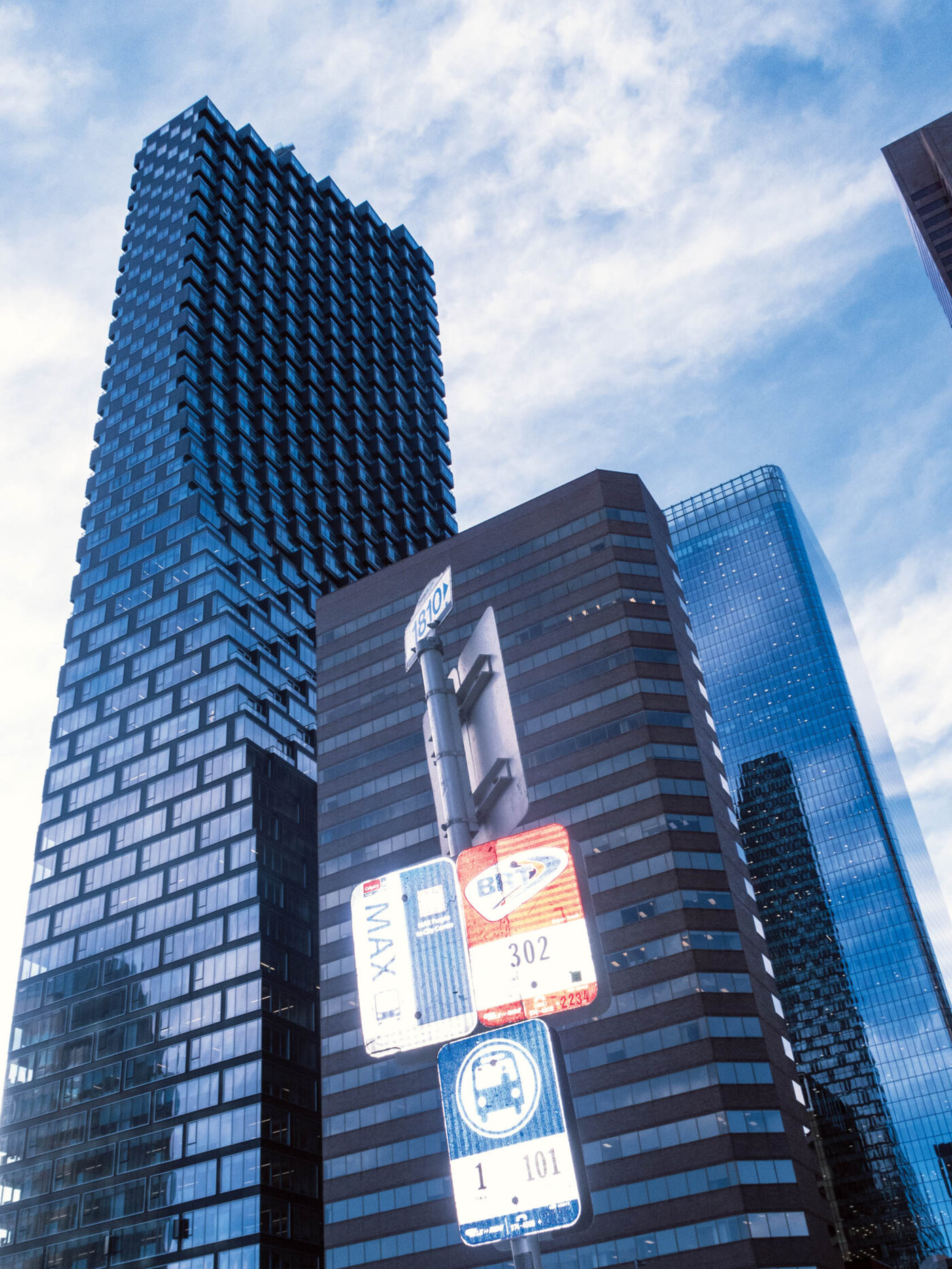
Changing the perception — both inside and outside the city — of Calgarians as categorically attached to their cars is crucial to moving the city forward, and doing so comes down to a matter of political will, says Ward 8 councillor Courtney Walcott. Citizen satisfaction surveys routinely show Calgarians want better transit. A recent survey showed that 72 per cent of people here rate transit as “very important” but only 23 per cent say they are “very satisfied” with the service. The survey also saw transit ranked the third-highest area that Calgarians agreed needed more investment, above road maintenance, which ranked sixth.
The persistent idea that we need to continue to prioritize private automobiles alongside or even above public transit is the result of choices made by successive city governments, Walcott says. “The system that Calgary Transit is working under is one that has been totally dictated to them, so it’s a question of, are we going to be courageous enough to dictate a new model?”
So far the answer is: sort of. The latest City budget, passed in November, had initially proposed to increase frequency of service, improve security and expand capacity on CTrain — but at a cost to users. Fares were set to go up by three per cent annually until 2026, bringing a single-trip ticket from $3.60 to $4. After public hearings, council rejected the fare increase, opting instead to dip into one-time City funds to make the improvements while freezing fares at 2022 levels. It also voted to eliminate fares for kids under 12 and reduce the price of weekend family transit passes. Though not the radical change some feel the system needs, it’s a positive step. Walcott, who voted for the fare freeze, says it shouldn’t be on users to pay for and support a transit system that has failed to thrive due to a lack of political leadership. “That is not their job,” he says. “It is our job. It is the municipality’s job, it is the Province’s job, it is the federal government’s job to create the convenience for the highest and best use of our land and our people’s time.”
Certainly, agreements between City and senior governments for bigger transit improvements can be a struggle. Sharon Fleming, director of Calgary Transit, says the City is exploring further funding options with the federal government for capital projects that could free up more money for operations, but in the meantime, “we need to do the best with the money we have.” And not every problem Calgary Transit faces is financial. One barrier to implementing 10-minute transit in the city is a shortage of bus operators to run those extra routes, says Fleming, noting the City was forced to lay off drivers during the pandemic.
A critical hurdle in getting Green Line construction started, meanwhile, has been finding skilled contractors willing to do the work in a jurisdiction that seems reluctant to ensure funding. And Calgary Transit is still working to lure riders back to the system after COVID, which saw a lack of social supports in the city result in a notable increase in open drug use and drug dealing on CTrains and in stations, further driving riders away. Still, the system has had some success recouping ridership with discounted fares, new planning and payment apps and theme buses. As of September 2022, transit ridership was at 80 per cent of pre-pandemic levels.
Fleming says that Calgarians do need to take some responsibility if they want better transit, even if it’s just updating how they view the system’s role in the city. Rather than looking at transit as simply a mode of transportation, we need to see it as a critical component of the entire transportation network, one that benefits everyone by reducing pressure on our roadways and our environmental footprint. In this sense, “I don’t think Calgarians are there yet,” Fleming says.
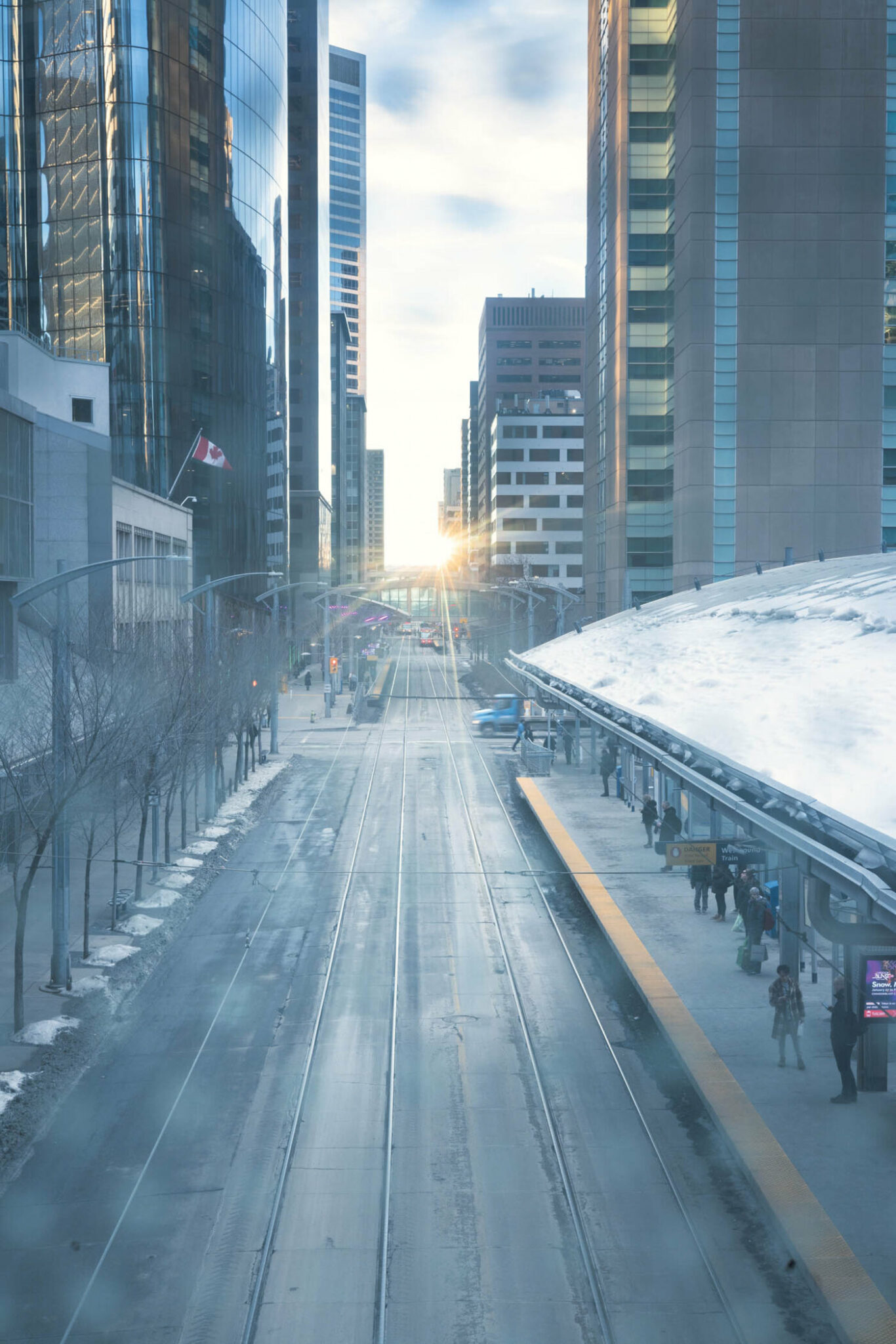
In the end, residents may not realize the importance of better transit until they see the transformative power of projects like the Green Line. Two years ago, critics of the line called it a “train to nowhere.” But current CEO, Green Line LRT Darshpreet Bhatti, who came to the role after the “train to nowhere” comment was first made in an official context, has seen firsthand how transit can turn “nowhere” into somewhere special. A downtown street corner in Kitchener-Waterloo, Ont., for instance, where Bhatti worked on the LRT, is now the epicentre of more than 500,000 square feet of Google offices and a bustling mixed-use area.
That’s the kind of potential the Green Line has for revitalizing underutilized areas in the Southeast of the city, Bhatti says, although Calgarians will have to be patient. Delays with the Green Line mean we won’t likely see the first trains run on Phase 1 until at least 2029, and funding for Phase 2 still hasn’t been secured. Yet Bhatti is adamant that we shouldn’t be discouraged. Other cities may have made much larger strides with transit in shorter time periods than Calgary, but with construction on the Green Line set to finally start next year, he believes we are moving in the right direction.
“You have to start somewhere,” he says.
